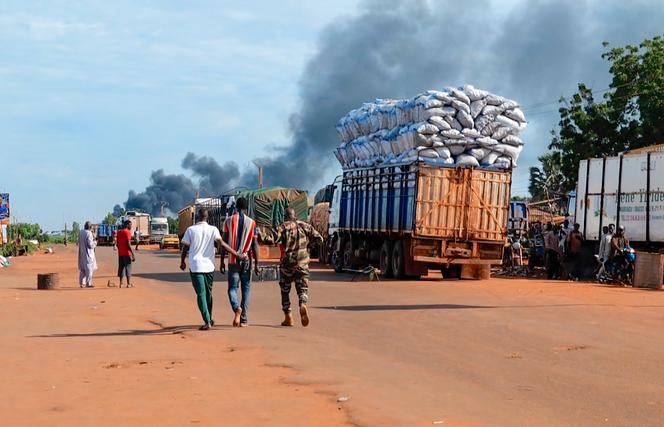


On Tuesday, September 17, Bamako was set to witness the opening of the trial regarding the purchase of the presidential plane, a symbol of the fight against corruption under the former regime, as promised by Colonel Assimi Goita's junta. Instead, the day became marked by the biggest jihadist attack on the Malian capital since the military coup in 2020. A Jama'a Nusrat ul-Islam wa al-Muslimin (JNIM) fighter quietly set fire to the plane's engine on the airport tarmac, symbolizing a profound humiliation.
The attack began at around 5:30 am, just as the first rays of sunlight had begun to fall on the Niger River. Gunfire and detonations echoed around the gendarmerie training center in the Faladié district, and some 10 kilometers further south, near the Modibo Keita airport. The JNIM quickly issued its first statement about the attack, claiming to have carried out a "specific operation" against the "military airport and a gendarmerie training base," resulting in "enormous human and material losses," as well as the "destruction of several fighter planes."
In Faladié, the attack was quickly contained by the army. The general staff said in a press release that "a group of terrorists attempted to infiltrate the gendarmerie school," adding that sweeps were being carried out and that "mopping-up operations were underway." By mid-morning, General Oumar Diarra, the army's chief of the General Staff, was on the scene, stating that "the terrorists have been neutralized." Suspected accomplices were arrested and paraded on television.
While the authorities have provided no human toll, a Malian officer told Le Monde that the attack on the gendarmerie school left "some 60 people dead." Many were wounded. The school houses the headquarters of the gendarmerie's elite units, the Rapid Action Surveillance and Intervent Group and the National Gendarmerie Intervention Platoon.
"This attack on the gendarmerie school was a decoy and a means of neutralizing these special units to prevent them from intervening on the terrorists' real objective: the airport," a military source told Le Monde. As late as Tuesday afternoon, gunfire was still ringing out and thick black smoke rose over the tarmac. The attackers had targeted Air Base 101, home to Malian Air Force planes and helicopters, as well as a detachment of Russian mercenaries from the Wagner Group, who, like the soldiers on the ground, had long been unable to repel the attack.
For part of the afternoon, the jihadists took control of certain areas of the airport. In videos they filmed, they can be seen firing into the deserted presidential pavilion, setting fire to hangars and, consequently, setting fire to one of the engines of the presidential Boeing. One of the Air Force's two CASA C-295 tactical transporters was destroyed. Other military aircraft were reportedly damaged in the fighting. The airport's commercial zone was not spared. In other videos seen by Le Monde, bullet holes can be seen in the windows of a boarding hall and the duty-free zone.
You have 32.84% of this article left to read. The rest is for subscribers only.
